By Donna Insco
According to the Centers for Disease Control (CDC) website, “CDC estimates that each year roughly 1 in 6 Americans (or 48 million people) get sick, 128,000 are hospitalized, and 3,000 die of foodborne diseases.” According to the CDC, produce was implicated in nearly half of the reported cases from 1998 to 2008.
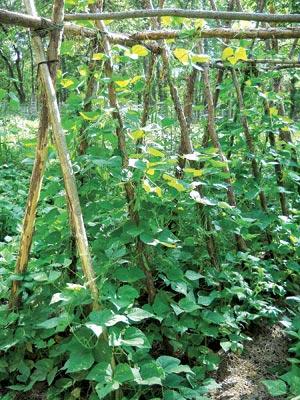
The reports are troubling. In 2006, a multi-state Escherichia coli (E. coli) outbreak in spinach sickened more than 200 people and led to the deaths of at least three. Celery was implicated in a Listeria outbreak in 2010. In 2011, 147 people in 28 states contracted Listeria from whole cantaloupes from Colorado.
Many of us garden to produce a cheaper, safer source of food for our families. Home gardeners may be thinking, “I don’t need to worry about those statistics. I garden organically and my vegetables are perfectly safe.” But if unsafe gardening practices are followed, there may be dangerous pathogens lurking in your basket of beans or homegrown greens. Pathogens that cause foodborne illnesses such as E. coli, Salmonella, and Listeria are naturally found in the environment, so all growers should become aware of safer gardening practices.
Sources of contamination
Crops can become contaminated during any part of the growing, harvesting, storage, or preparation stages. Of special concern are those vegetables and fruits commonly eaten raw with no heat treatment to kill bacteria.
Listeria monocytogenes is a pathogen common in soil. The CDC lists several studies where L. monocytogenes was isolated from samples of decaying corn, soybeans, and wild grasses. This pathogen has also been isolated from the feces of deer and wild birds. Some strains cause the human illness Listeriosis, a disease the CDC lists as one of the top five foodborne illnesses resulting in death in the U.S. In addition to celery and cantaloupes, outbreaks of Listeriosis have been associated with asparagus, cauliflower, broccoli, lettuce, and tomatoes.
Salmonella, also one of the top five deadly foodborne illnesses, is a bacterium common in the intestines of birds, reptiles, and mammals. When ingested by humans, Salmonella causes fever, diarrhea, and stomach cramps. It can invade the bloodstream of people with weakened immune systems, leading to death. Salmonella has been isolated from samples of onions, tomatoes, cantaloupes, and watermelons. Produce can acquire this pathogen through contaminated irrigation or wash water, and by contact with animal manure (bird droppings on tomatoes, for instance).
E. coli is present in the intestines of many species. The CDC identifies cattle, sheep, goats, deer, and pigs (both domestic and feral) as having a higher risk of carrying pathogenic Shiga toxin-producing E. coli 0157:H7. The primary reservoir of this pathogen is domestic cattle, and the bacteria can remain viable in cattle manure up to 70 days, depending on temperature. Recently, this type of E. coli has also been isolated from the feces of birds believed to have become infected after feeding on garbage, fish, or land grazed by cows. Soil can acquire this pathogen from the application of raw or improperly composted manure. Evidence suggests that manure-coated dust particles can be blown by the wind and contaminate growing fields far from where cattle are housed or grazed.
Pathogens are found on the outside of the produce from contact with dirt, manure, animals, or insects. But under certain conditions, pathogens can also infiltrate and become internalized within fruits and vegetables. Research has shown lettuce leaves can absorb pathenogenic E.coli through the stomata and cut surfaces. Experiments indicate that Salmonella in soil can infiltrate stem tissue in tomatoes contacting the soil and can also infiltrate the netting on the rind of cantaloupes.
Besides the soil plants grow in, other areas of concern are the water used to irrigate crops or wash the fruits and vegetables after harvest. Equipment and unsanitary storage conditions may transfer dangerous bacteria to otherwise clean crops. The people harvesting and handling the produce can also be a source of contamination.
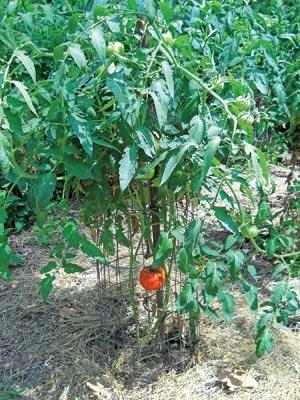
Good agricultural practices
Good Agricultural Practices (GAPs) are guidelines to prevent microbial contamination of fresh fruits and vegetables. GAPs are recommended by the Food and Drug Administration, the United States Department of Agriculture, and state university extensions. The guidelines are aimed at commercial farmers, but backyard gardeners and homesteaders can benefit from them also. Each year many gardeners dump loads of rotting plant material or manure on the soil and then eat the plants produced. If we get sloppy in our techniques, we could be depositing a pathogen load on the soil we depend on. Safer practices will help us keep our families healthier.
Manure
Applications of manure are the leading cause of pathogens in soil. GAPs guidelines concerning raw manure vary according to the issuing agency. The National Organic Program (NOP) requires a 90-day wait between applying raw manure to soil and the harvest of edible plant parts not touched by the soil itself, such as corn or climbing beans elevated by a trellis. The NOP requires 120 days between application of raw manure and harvest of edible parts that could contact the manure, such as melons or cucumbers, which are commonly grown on the ground. Many state university extensions recommend a conservative approach and tell growers not to apply uncomposted manure within 120 days of harvest of any fruits or vegetables usually consumed raw. They also recommend incorporating manure into the soil to speed decomposition.
Ideally, growers would never apply raw manure. The high nitrogen content can damage plants and raw manure usually contains weed seeds. But gardening is often far from ideal. Maybe it’s spring and time to plant lettuce and the compost isn’t quite done. Or maybe the barn desperately needs cleaning and all that manure has to go somewhere. The gardening police aren’t watching, are they? Who’s gonna know? If you are providing food for your family only, you can accept the risk and do as you please. But if you give vegetables away, donate to a food pantry, or sell at a farmers’ market, you are possibly putting others at risk and could be responsible for an outbreak of foodborne illness.
Gardens can also acquire manure through “direct deposit.” Livestock should be removed from growing areas 120 days before harvest to prevent raw manure from contacting fruits and vegetables. Because of possible pathogens in their feces, it’s not a good idea to let ducks or geese wander through the salad greens, no matter how many slugs they might eat. If a grower allows pigs or chickens to forage in growing areas, it’s best to introduce them in the fall after harvest. The livestock can then clean up crop residue and insect pests, yet be removed well before spring planting.
Horses used for farm work have considerations of their own. To date, horse manure has not been implicated in outbreaks of foodborne illnesses. To be safe though, the Ohio State University Extension has issued the following recommendations to growers using horse-drawn equipment. Keep horses on paths designated for them and stop cultivating growing fields with horses at least 14 days before harvest. If horse-drawn equipment is used for harvest, keep the animals at least five feet from the crops. Manure deposited in the growing field by the horses should be removed immediately by the driver, and the driver should have no contact with the crop being harvested. The vegetables around the area of the manure should not be picked if they will be consumed raw.
Time will kill pathogens in manure if growers don’t want to compost it. Manure that has been allowed to sit in a pile for one year, without turning or composting, is considered safe as a soil amendment. Just be sure not to add any fresh manure to the pile during the aging process. Locate the pile away from growing areas, preferably downhill from them so rain doesn’t send a flood of pathogens into the garden. After 12 months, the aged manure can be incorporated into garden soil.
Gardens should be located far enough away from barns, corrals, pastures, and livestock loafing areas to limit windblown dust that could contain E. coli. Consider planting a hedge to reduce dust if you must garden near these areas. Forsythia is a fast-growing flowering shrub that lives for decades and forms a wide dense hedge if it is rarely trimmed. Your county extension agent can offer suggestions for other hedge-forming plants suitable for your area.
Compost
Most growers who also raise livestock prefer to build compost piles in a convenient spot handy to both the garden and livestock areas. But compost piles should be far enough from the barn so that fresh manure can’t be accidentally added to existing piles. Also locate compost piles away from growing areas so that runoff from rain won’t reach the garden.
To effectively kill pathogens, the center of the pile needs to reach temperatures between 140 and 160° F for three to 15 days. The pile should be turned at intervals so that all material in the pile reaches this temperature. To prevent pathogen transfer, don’t use the same implements to turn the pile that are used to handle raw manure or are used in the garden during the growing season. The above guidelines also apply to compost that does not contain manure. Even if you handled your piles properly, don’t add compost containing manure within 45 days of harvest to crops that will be eaten raw.
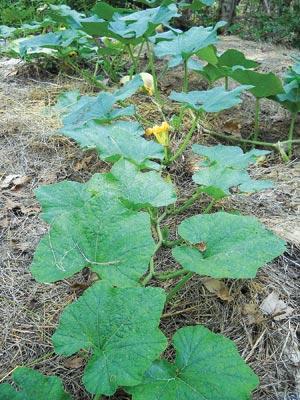
Go vertical and mulch
Use vertical gardening techniques to further limit contact with the soil. Stake tomatoes and grow cucumbers, squash, and beans on trellises or along a fence. Although initially time-consuming to build and train the plants upward, a well-made trellis can be a thing of beauty. Even a scrap of fencing propped up with a couple of poles will keep vine plants off the ground. Vertical growing also makes it easier to see and harvest crops.
Rain striking bare soil can splash dirt and bacteria onto edible plant parts. A straw or grass clipping mulch installed around plants and in paths will keep produce cleaner. Sections of newspaper four layers thick laid under the straw will keep most of the dirt off of plants, even in a downpour.
Wildlife
Discourage wildlife from entering gardens. They eat large amounts of produce and their feces harbor pathogens. Although some bird species consume insect pests, the CDC lists wild birds as known carriers of Salmonella, Listeria, and E. coli. Locate bird houses, baths, and feeders at a distance from growing areas. Trim overhanging tree limbs so birds don’t perch or roost over edible plants. Consider not harvesting plants usually consumed raw if they are contaminated by bird droppings.
Try all the usual scare tactics such as loud noises, shiny objects, scarecrows, and dogs to convince wildlife to forage elsewhere. Fencing is an effective but expensive solution for deer. Dog and cat feces also contain pathogens, so pets should not be allowed to defecate in growing areas.
Water
E. coli and Salmonella are among the most common microbial pathogens in water. Surface water from lakes, ponds, or streams used to irrigate growing areas may contain these pathogens if livestock or wildlife has access anywhere along the watershed.
A good rule for crops consumed raw or minimally cooked: within 30 days of harvest, don’t irrigate with water that you wouldn’t drink. Since overhead watering can spread pathogens due to backsplash from the ground, trickle irrigation is safer. Livestock water buckets often contain stray bits of manure so it’s not a good idea to empty them onto edibles within 30 days of harvest. Also use potable water for mixing foliar sprays.
Many gardeners catch and store rainwater for gardening. The World Health Organization (WHO) suggests using fine mesh screens over openings of storage tanks to exclude leaves, dust, animals, and insects. Don’t catch rain under power lines, tree limbs, or other structures where birds perch. Clean catchment systems and holding tanks regularly.
Some gardeners use waste water for irrigation. WHO recommends waiting at least one month between using waste water in gardens and harvest. WHO considers it unsafe to use water for irrigation that was used to wash work clothes or diapers, and recommends against this practice.
Harvesting
Containers for harvesting fruits and vegetables should be easy to clean. Plastic buckets and wire mesh baskets are ideal. Cardboard boxes used for a single vegetable type and then recycled, composted, or burned are also useful. If you prefer more visually-appealing containers like wooden crates or baskets, designate each container for a particular vegetable. It is unsafe to use the same container for everything — one day full of onions and the next day filled with tomatoes. Washable containers can be disinfected before and after harvest with one tablespoon of 5.25% bleach in one gallon of water.
Wash your hands well with soap and warm water before harvesting produce. Make sure children wash their hands also if they are helping. Don’t harvest if you are ill, or if you have open wounds on your hands.
Use clean knives if you cut produce from plants. Occasionally disinfect knives with the above bleach solution if you are harvesting long rows.
Don’t lay fruits and vegetables on the ground while harvesting. Also, don’t set containers of produce on the ground. Remember, that’s where potential pathogens are. Gently brush off surface dirt from root crops.
Wash produce after harvest to remove dirt and organic matter. Research with tomatoes has shown that washing in cool water can cause bacteria to infiltrate into the tomatoes’ stem and core tissue. So it is safer to wash fruits and vegetables with water warmer than the produce itself. Research indicates that vigorously washing produce with potable water is often as effective at removing pathogens as using a chlorinated “produce wash.” However, washing will not eliminate pathogens entirely due to tiny crevices and the waxy cuticle on the skin of many vegetables. It is much safer to prevent microbial contamination in the first place by following good agricultural practices.
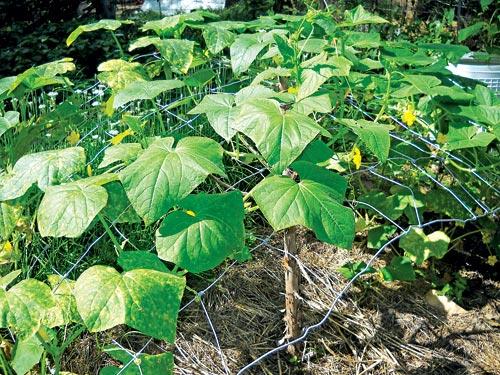
Storage and transport
Store your fruits and vegetables appropriately to reduce bacterial growth and to maintain quality. Clean storage areas frequently. Inspect pantries, basements, and cellars and close up or screen small openings to prevent rodents, insects, or birds from entering.
It’s a good idea to wash equipment used to transport your produce. Wash truck beds between trips to the farmers’ market or food pantry. Many farm families have one do-all truck, hauling fruits and vegetable one week and livestock the next. But be aware that this practice is heavily frowned on by food safety experts. Containers that are used to transport produce usually consumed raw should be sanitized with the bleach solution. You never know when a customer will snack on one of your tomatoes on the way home.
Keep good records
Keep records so you will know if you are following good agricultural practices. This can be as simple as jotting down notes and dates on a calendar.
However, keep in mind that during an outbreak of foodborne illness, growers who have not documented their practices are often blamed. So if you sell to the public or donate to charity it is wise to keep a detailed account. Since even the hint of unsafe produce can shut down a market, some farmers’ markets are asking to see records of safe practices before a grower can set up a stall.
A log book or journal with the following information can be useful:
- Dates compost piles were started, with a list of ingredients
- Dates compost containing manure was applied to growing areas
- Dates raw manure was applied
- The name of the supplier and lot numbers of purchased compost or topsoil
- Planting dates and location in garden
- Brief notes about what grew in that spot previously
- Dates of pesticide application, name of pesticide, and application rate
- Notes on irrigation (trickle or overhead) and water quality
- Harvest dates and where the produce went (the home table, the neighbors, to market, or charity)
- Notes on wildlife intrusions, if any
- Confirmation that containers or transport vehicles were clean
- Anything else you can think of
Final thoughts
As growers, we are morally responsible for the safety of the food we produce. Increasingly in our litigious society, we are legally responsible as well. Look closely at your gardening techniques and instigate good agricultural practices to ensure the safety and wholesomeness of every crop you produce.


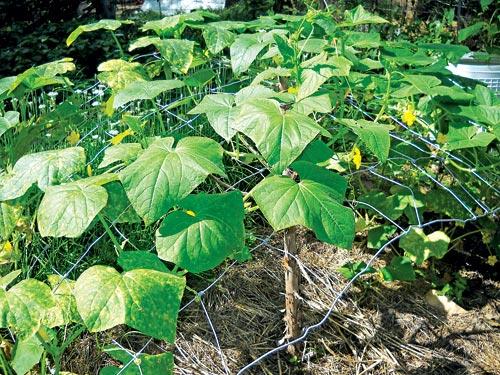
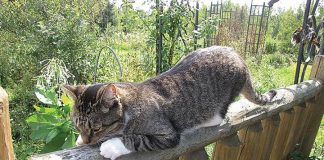







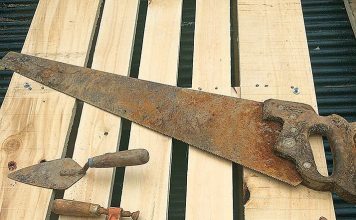



What you have said here is certainly applicable to commercial garden produce. Most of the illnesses have been traced to contaminated water used to irrigate. I have been organic gardening for 20 years using chicken bedding, rabbit manure, goat bedding and bat guano among other sources for nutrients. By the time the amendments have baked in the sun, I feel pretty confident they are pathogen free if they ever had any. I only wash my veggies if they get rain splatter on them.